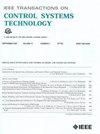再论多机电网中PMU的最优配置问题
IF 3.9
2区 计算机科学
Q1 AUTOMATION & CONTROL SYSTEMS
引用次数: 0
摘要
为了提供基于物理状态的实时可见性,相量测量单元(pmu)部署在整个电网中。PMU数据能够实现电网的实时监测和控制,并且在向智能电网过渡中至关重要。在确定地理位置时,考虑到各种因素,最佳PMU放置(opp)。本文的重点是OPP的控制理论和可观察性方面。无数的研究已经研究了基于可观察性的公式来确定传输网络中的OPP。然而,他们大多采用了系统动力学的简化表示,忽略了模拟电力流动的基本代数方程,忽略了太阳能和风能等可再生能源,并且没有对其不确定性进行建模。因此,本文通过解决文献的局限性,重新审视了基于可观测性的OPP问题。考虑了电力系统的非线性微分代数(NDAE)表示。系统采用各种离散化方法进行离散化,同时明确考虑不确定性。探索了一种移动视界估计(MHE)方法来重建系统的联合微分和代数初始状态,作为解决OPP问题的入口,然后将其表述为计算可处理的整数程序(IP)。在标准电网上进行了全面的数值模拟,验证了该方法的各个方面,并测试了其对各种动态条件的鲁棒性。本文章由计算机程序翻译,如有差异,请以英文原文为准。
Revisiting the Optimal PMU Placement Problem in Multimachine Power Networks
To provide real-time visibility of physics-based states, phasor measurement units (PMUs) are deployed throughout power networks. PMU data enable real-time grid monitoring and control—and are essential in transitioning to smarter grids. Various considerations are taken into account when determining the geographic, optimal PMU placements (OPPs). This article focuses on the control-theoretic, observability aspect of OPP. A myriad of studies have investigated observability-based formulations to determine the OPP within a transmission network. However, they have mostly adopted a simplified representation of system dynamics, ignored basic algebraic equations that model power flows, disregarded renewables such as solar and wind, and did not model their uncertainty. Consequently, this article revisits the observability-based OPP problem by addressing the literature’s limitations. A nonlinear differential algebraic (NDAE) representation of the power system is considered. The system is discretized using various discretization approaches while explicitly accounting for uncertainty. A moving horizon estimation (MHE) approach is explored to reconstruct the joint differential and algebraic initial states of the system, as a gateway to the OPP problem, which is then formulated as a computationally tractable integer program (IP). Comprehensive numerical simulations on standard power networks are conducted to validate different aspects of this approach and test its robustness to various dynamical conditions.
求助全文
通过发布文献求助,成功后即可免费获取论文全文。
去求助
来源期刊

IEEE Transactions on Control Systems Technology
工程技术-工程:电子与电气
CiteScore
10.70
自引率
2.10%
发文量
218
审稿时长
6.7 months
期刊介绍:
The IEEE Transactions on Control Systems Technology publishes high quality technical papers on technological advances in control engineering. The word technology is from the Greek technologia. The modern meaning is a scientific method to achieve a practical purpose. Control Systems Technology includes all aspects of control engineering needed to implement practical control systems, from analysis and design, through simulation and hardware. A primary purpose of the IEEE Transactions on Control Systems Technology is to have an archival publication which will bridge the gap between theory and practice. Papers are published in the IEEE Transactions on Control System Technology which disclose significant new knowledge, exploratory developments, or practical applications in all aspects of technology needed to implement control systems, from analysis and design through simulation, and hardware.
 求助内容:
求助内容: 应助结果提醒方式:
应助结果提醒方式:


